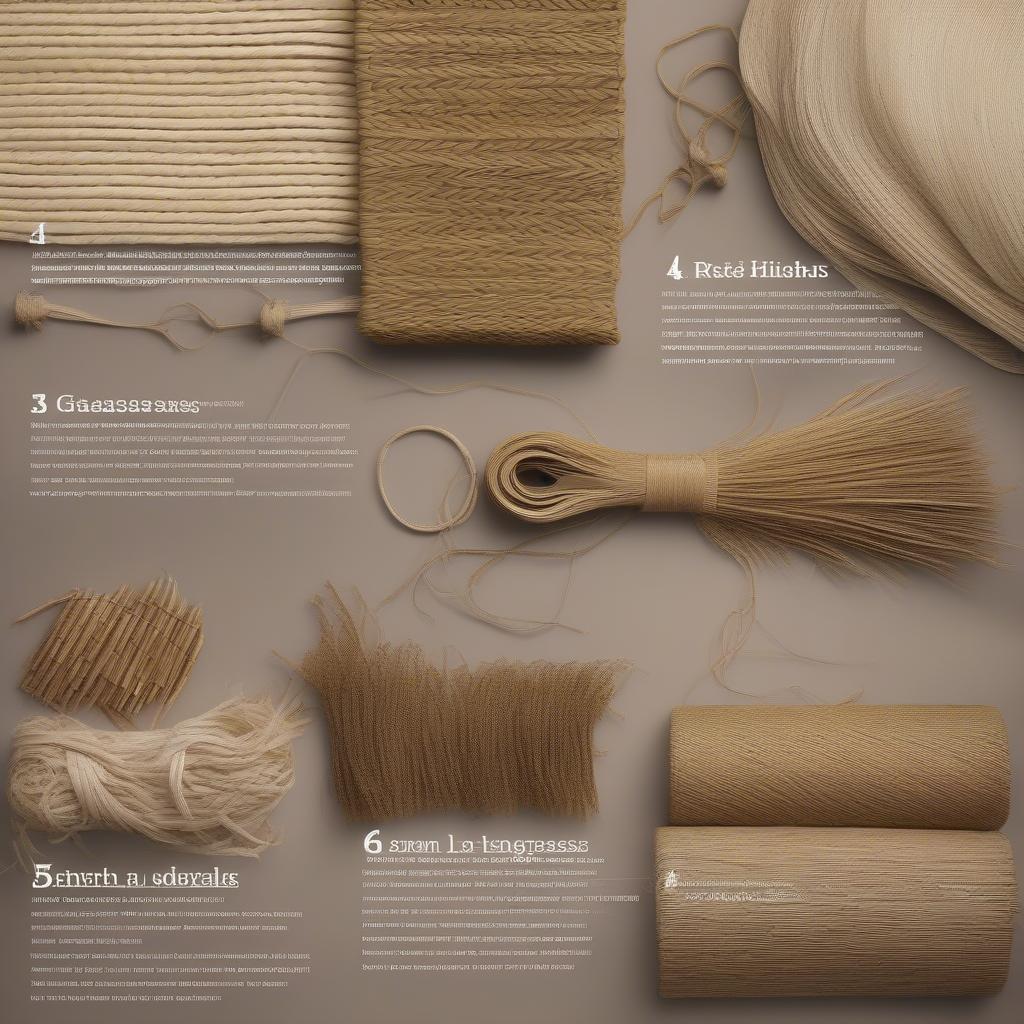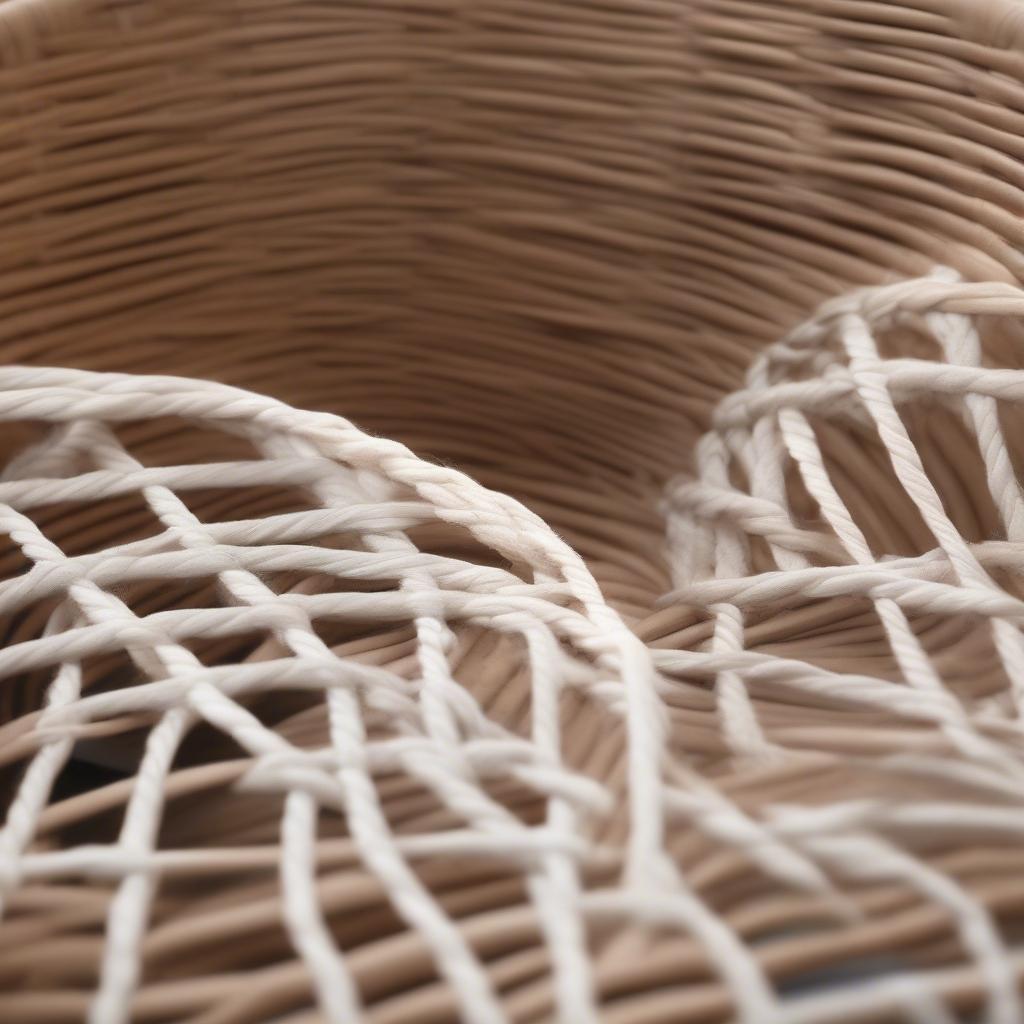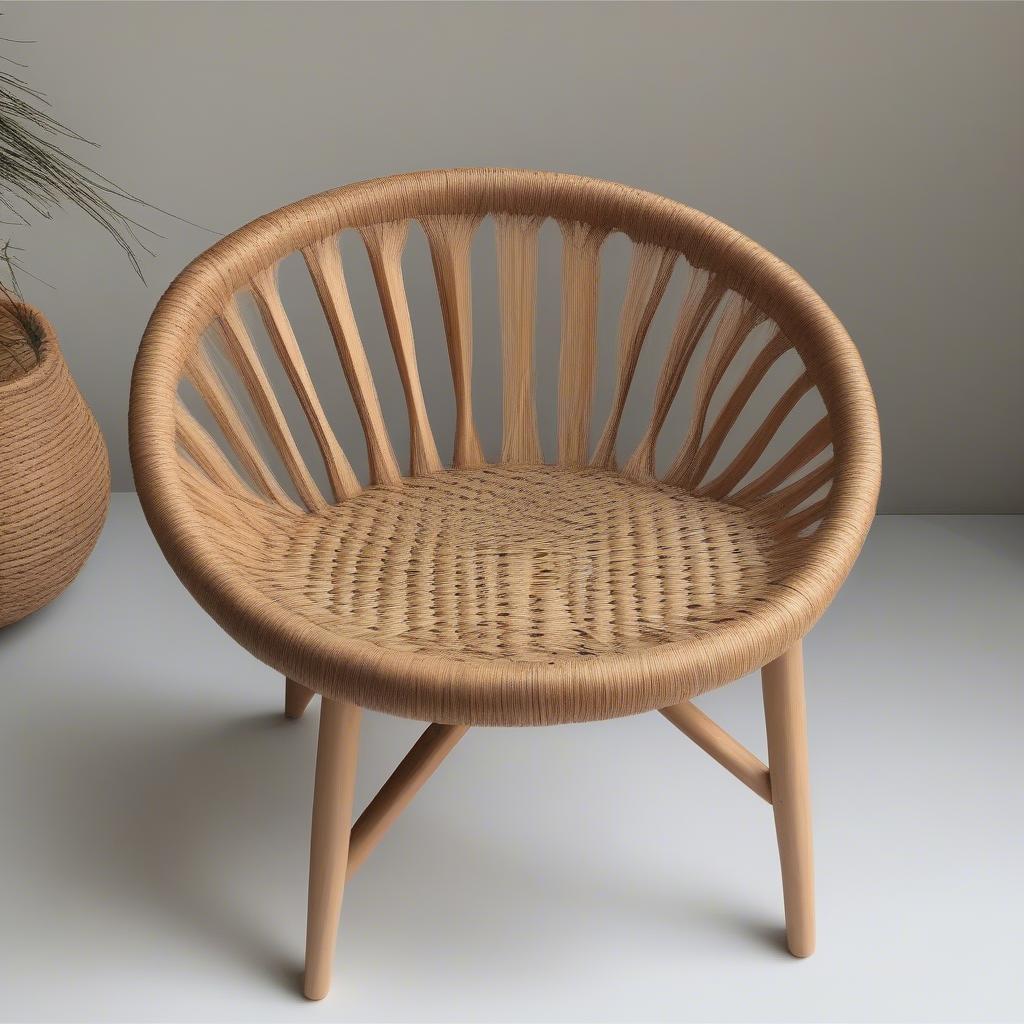Weave Chair
How to Weave a Round Chair Seat
Learning How To Weave A Round Chair Seat can transform a tired piece of furniture into a cherished possession. This comprehensive guide will provide you with the knowledge and techniques needed to master this rewarding craft, from choosing the right materials to executing intricate weaving patterns. Whether you’re a seasoned DIY enthusiast or a complete beginner, we’ll equip you with everything you need to confidently tackle this project.
Choosing Your Materials for Weaving a Round Chair Seat
The first step in learning how to weave a round chair seat is selecting the appropriate materials. Your choices will impact both the aesthetic and durability of your finished project. Popular options include natural fibers like rush, reed, seagrass, and Danish cord. Each material offers a unique texture and strength, so consider the intended use of the chair and your desired look. For example, rush offers a rustic charm, while Danish cord provides a sleek, modern finish.
 Various Weaving Materials for Round Chair Seats
Various Weaving Materials for Round Chair Seats
Preparing Your Chair Frame
Before you begin weaving, ensure your chair frame is sturdy and free of any loose parts. A stable frame is crucial for a successful weave. Clean the frame thoroughly and sand any rough edges to prevent snags. If your chair has an existing woven seat that needs replacing, carefully remove the old material and clean the frame to prepare for the new weave. A well-prepared frame ensures a smooth weaving process and a professional-looking finished product.
Basic Weaving Techniques for a Round Chair Seat
There are several weaving patterns suitable for round chair seats. The most common is the four-way weave, which creates a strong and visually appealing design. This technique involves weaving the material over and under alternating strands, creating a checkerboard effect. Other options include the spiral weave and the Danish cord weave, each offering a distinct look.
 Four-Way Weave Technique on a Round Chair Seat
Four-Way Weave Technique on a Round Chair Seat
Starting the Weave
Begin by attaching your chosen material to the frame using a secure knot. Ensure the knot is tight and won’t slip during the weaving process. From this starting point, you’ll begin building your weave, following the chosen pattern. A strong starting knot is essential for a stable and durable seat.
Building the Weave
As you weave, maintain consistent tension to create a firm and even seat. This prevents sagging and ensures a professional finish. Regularly check your work to ensure the weave is tight and the pattern is consistent. Consistent tension is key to a beautiful and long-lasting woven seat.
 Finished Round Woven Chair Seat
Finished Round Woven Chair Seat
Troubleshooting Common Weaving Issues
Even experienced weavers encounter occasional challenges. Common issues include uneven tension, loose strands, and broken material. Don’t be discouraged! With practice, you’ll learn how to address these issues and create a flawless weave. Remember, patience is key.
Why choose a natural fiber weave?
Natural fiber weaves offer a sustainable and eco-friendly choice for your furniture. Materials like rush, reed, and seagrass are renewable resources, making them a responsible option for environmentally conscious consumers. They also bring a touch of natural beauty and texture to your home décor. This diamond weave egg chair is a good example.
“A beautifully woven chair seat is a testament to the artisan’s skill and patience,” says renowned furniture restorer, Amelia Carter. “The process is meditative and the results are truly rewarding.” Each weave is a unique piece of art, adding character and warmth to any space.
How can I customize my woven seat?
You can personalize your woven seat by experimenting with different materials, colors, and patterns. Consider incorporating contrasting colors or adding decorative elements to create a unique design that reflects your personal style. Learn more on how to weave a chair seat.
“The beauty of weaving lies in its versatility,” adds Carter. “With a little creativity, you can transform a simple chair into a statement piece.” This wishbone wooden dining chair natural weave seat natural shows an elegant example. You can also explore the art of fiber rush chair seat weaving.
Conclusion
Mastering how to weave a round chair seat is a fulfilling endeavor that allows you to revitalize furniture and create beautiful, functional pieces. By following these steps and practicing your technique, you’ll be well on your way to creating stunning woven seats that will be enjoyed for years to come. You might even be inspired by the weave chair by Mariel Penner-Wilson.
FAQ:
- What is the best material for weaving a chair seat? This depends on your preference and the chair’s intended use. Rush is durable and rustic, while Danish cord is sleek and modern.
- How long does it take to weave a chair seat? The time varies depending on the size of the seat, the complexity of the pattern, and your experience level.
- What tools do I need for weaving a chair seat? Basic tools include a sturdy frame, your chosen weaving material, scissors, and a measuring tape.
- Can I weave a chair seat myself? Absolutely! With patience and practice, anyone can learn to weave a chair seat.
- Where can I buy weaving materials? Weaving materials are available online and at craft supply stores.
- What is the most common weaving pattern for round chair seats? The four-way weave is a popular choice for its strength and visual appeal.
- How do I maintain a woven chair seat? Regular dusting and occasional cleaning with a damp cloth will help preserve the beauty of your woven seat.
When you need assistance, contact our 24/7 customer service team at Hotline: +84 388 951 999, or visit us in Hanoi, Vietnam, or Tech Avenue, Suite 12, San Francisco, CA 94105, USA.
